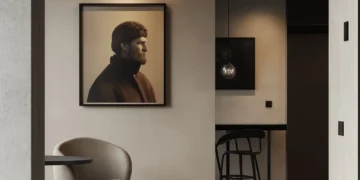
Thinking that electrochromic windows sound like something out of a sci-fi novel?
Nope — they’re actually a super-smart type of window that can be made more or less opaque at the touch of a button, all thanks to the power of electricity.
Say goodbye to endlessly opening and closing blinds, and hello to the future.
Want to know more about how these smart windows work?
Keep reading for all the science.
Window Glass is Coated With Metal Oxide
Unlike a normal window, which is made of one or more layers of clear glass, electrochromic windows can be made of either plastic or glass, and are coated with a thin layer of metal oxide.
This metal oxide is a unique material that’s able to change color when an electrical current is applied. Metal oxides are a commonly-used catalyst for chemical reactions.
They’ve been thoroughly tested and are safe for use inside the home, so there’s no need to worry about dangerous chemicals.
Electrodes Are Sandwiched Inside The Window Pane
Where does the electrical current that changes the color of your metal oxides come from?
It’s cleverly hidden inside in the window, in the form of two electrodes. Lithium ions are passed back and forth between these electrodes, and this is what changes the color of the window.
There’s no way of getting an electrical shock from these electrodes as they’re safely layered inside the window.

Applying an Electrical Current Changes The Color of the Glass
Pressing a button applies a current to your window, forcing the ions inside to shift position and change the properties of the oxide coating on the glass.
When lithium ions reside in the electrode on the inside of your window, the window will appear clear. When they move to the outermost electrode, the window becomes opaque.
This happens as the ions react with the metal oxide on the glass. The inside of the window typically uses a chemical like lithium cobalt oxide, while the outside will use something like polycrystalline tungsten oxide.
As the ions soak into the outer layer of oxide, they force it to become opaque. As they’re pulled back towards the inside layer, they allow it to become transparent again. It’s simple science, but works really well in this application.
There’s no power needed to maintain smart glass windows. Since the electrodes are simply being passed back and forth, you only need power when switching from dark to light. This makes the windows eco-friendly and affordable.
Should You Get Electrochromic Windows?
Wondering if electrochromic windows are worth investing in?
We’d say yes — they’re good for the environment and your wallet, as they help keep rooms at a comfortable temperature without the use of air conditioning or heating. Many options use a sunlight sensor, meaning you don’t even need to be in the house to reap the benefits.
They’re also great for increasing privacy and boosting home security, useful if you live in a high crime area.
Want more interesting home design tips? Check out the rest of our blog today.


















